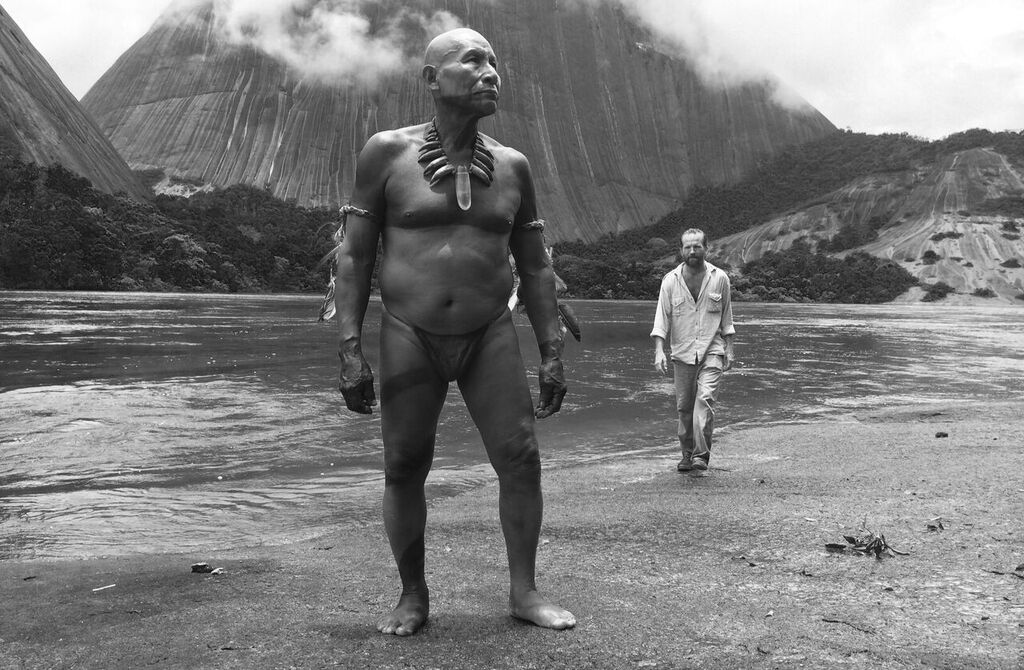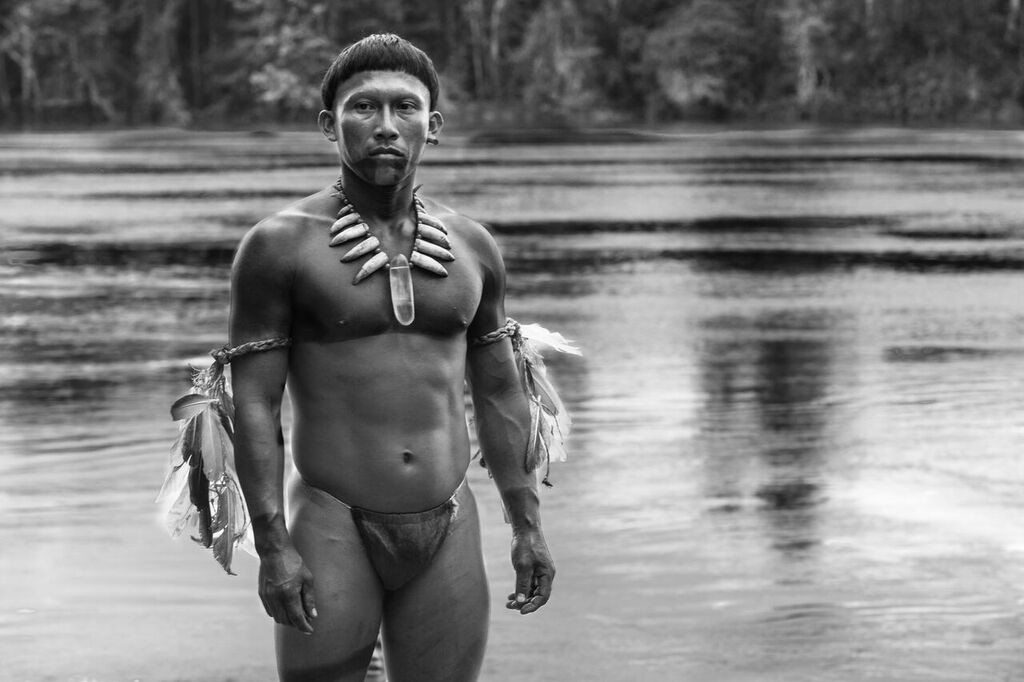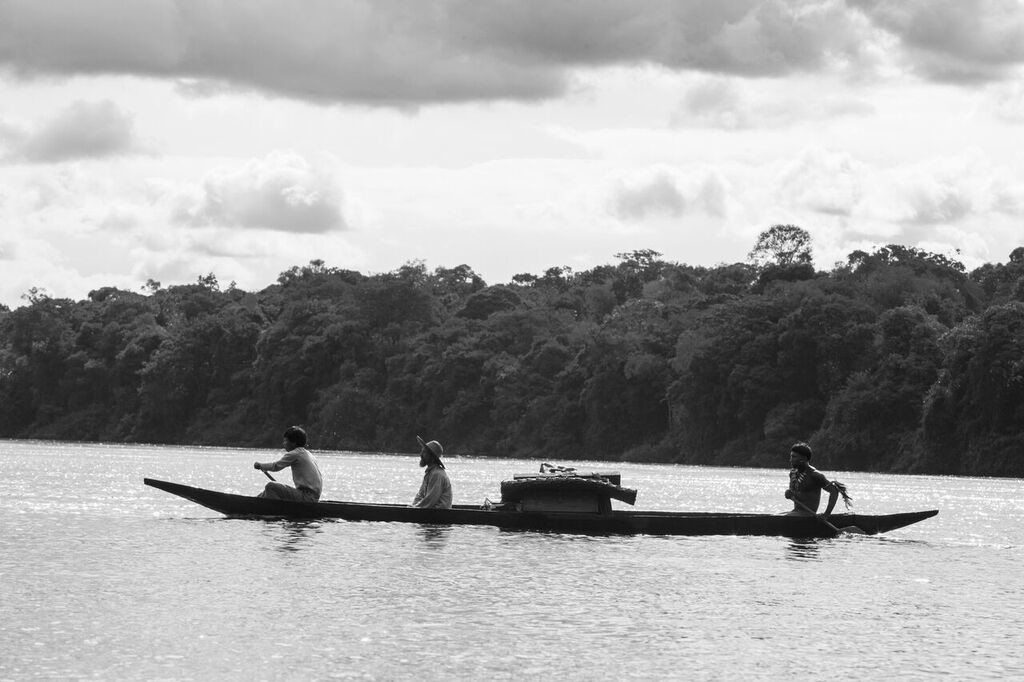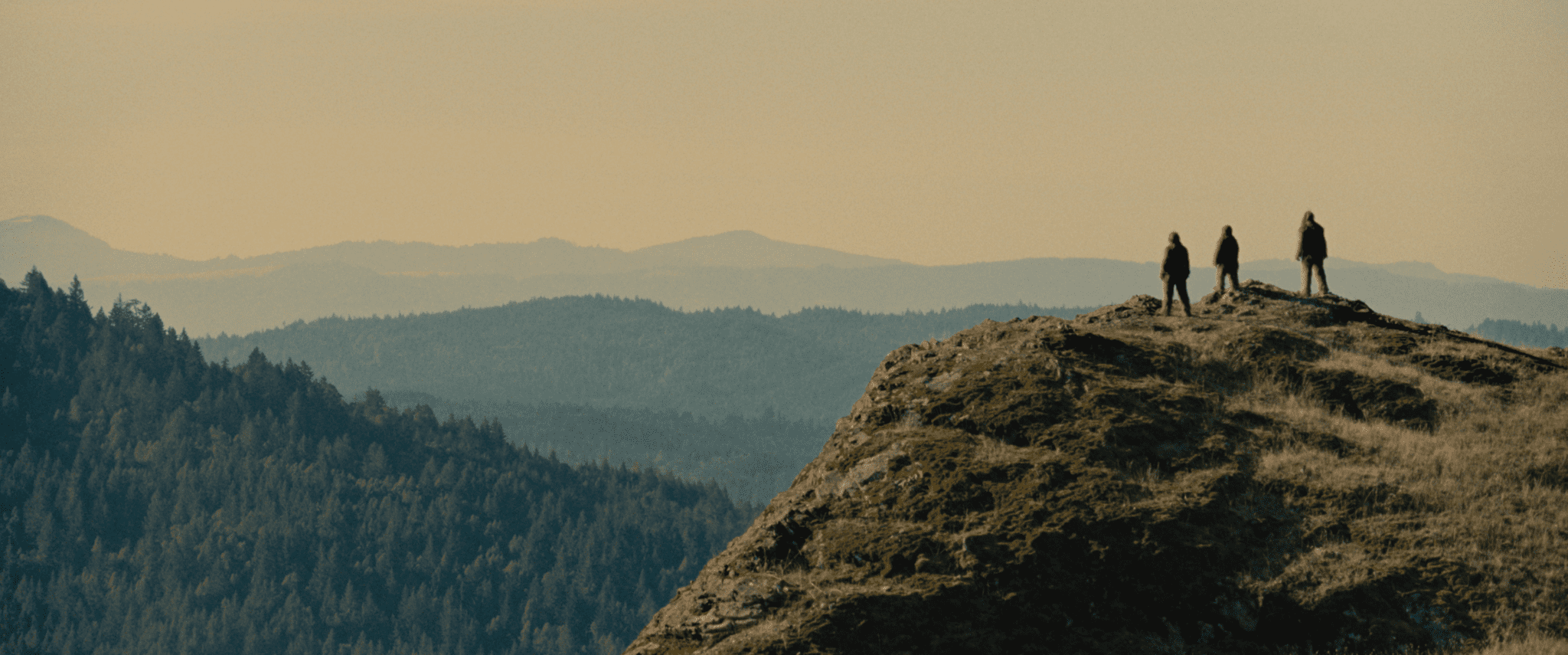Oscar-nominated (Best Foreign Language Film) Embrace of the Serpent is an artful exploration of the spirituality of natural religion. It is the story of Karamakata, a shaman, and two journeys he undertakes many years apart with European ethnologists. The story is inspired by the journals of two such scientists, Theodor Koch-Grunberg and Richard Evans Schultes, who traveled through the Amazon in the last century. Because director Ciro Guerra wanted to make a film about colonialism from the perspective of native peoples, it veers away from the Western way of storytelling. It is still essentially a linear narrative, but it also manages to conflate the two stories from years apart into parallel accounts.
The first story shows us Karamakata as a young man. Theo, a German scientist, is brought to Karamakata for healing. He has contracted one of the tropical diseases, but it can only be cured by the rare (perhaps mythical) plant Yakruna. Karamakata, the last of his people, knows where the plant can be found and sets off in search of the healing flower. Years later, Evan, an American ethnologist, finds a now old Karamakata in search of knowledge about the fate of Theo, who was never heard from again after the earlier trip. Again Karamakata sets off?across the same route?with another Westerner in tow. The visits with some of the same tribes or outposts show us the corruption the Western ideas have brought to the area.
Because the film is such a visual experience and less a strict narrative, it has a bit of a poetic feel to it. This is enhanced by the use of black and white cinematography which takes the film out of the realm of ?reality?. (At first I was a bit disappointed that I was missing the vibrant colors of the rainforest, but soon I began to appreciate the way the photography enhance the mystical feel of the film.) The conflict between the Western scientific understanding of reality and the native natural view of reality is a central part of this film. Theo, and later Evan, hold on to their Western ideas, but they must rely on Kanamakata for their survival. Karamakata?s approach to the world around him is very different from the way the European travelers see the world. Whose understanding is correct? Or is the very concept of ?reality? something that can vary?
This conflict about reality is essentially a spiritual and metaphysical question. Even within Western thought there often arise conflicts between science and religion?even between different scientific views and different religious views. This journey through Amazonia and across time takes a much more spiritual perspective than it does a scientific view. Karamakata?s natural religious understanding of the world may seem very strange to those of us with a Western mindset, but then it could well be just as legitimate an understanding?and is one that is shared by many people throughout the world. Is there something more spiritual about such a non-scientific worldview? How do you align the spiritual ways of seeing reality with the scientific view that is so engrained in our Western thought?
Photos by Andres Cordoba, courtesy of Oscilloscope Laboratories







